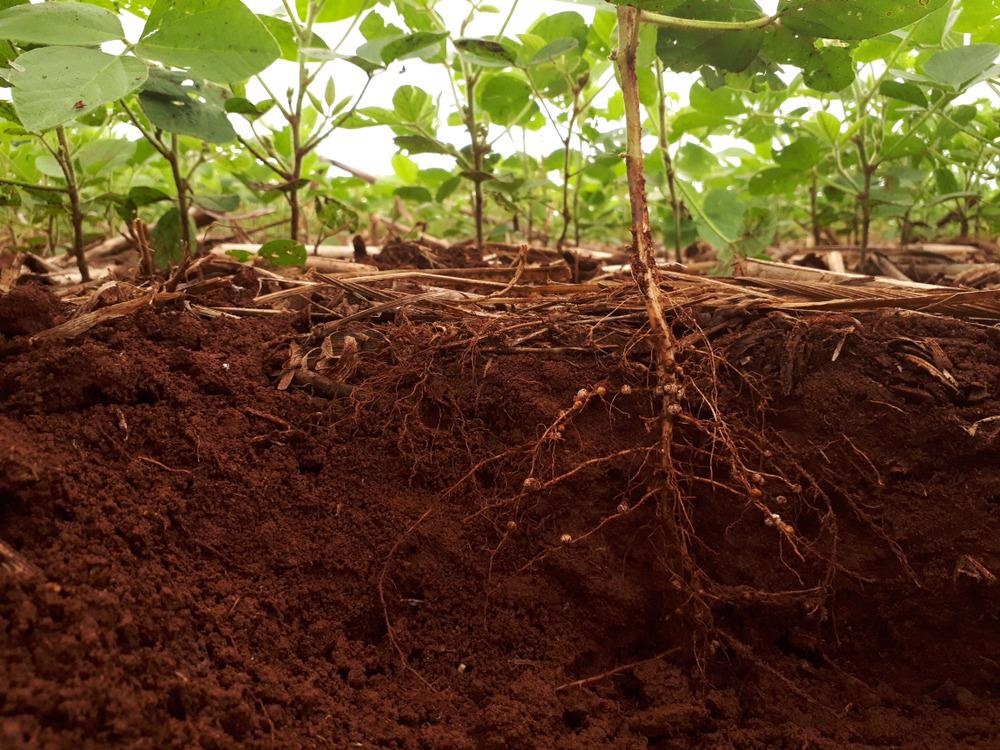A recent study published in the journal ACS Agricultural Science & Technology examined the effects of graphene treatment on plant growth and respiration.

Study: Graphene-Mediated Antioxidant Enzyme Activity and Respiration in Plant Roots. Image Credit: Lidiane Miotto/Shutterstock.com
Graphene: An Important Nanomaterial
Graphene is a carbon nanocomposite with excellent physiochemical characteristics, making it a preferred material for optoelectronics, bioengineering, advanced manufacturing, environmental conservation, and agricultural production.
The effects of graphene on plant metabolism, seedling growth, productivity, quality of the product, and embryonic root development are the focus of recent studies. According to most of the findings, graphene has both beneficial and negative impacts on plant root growth.
Positive Effects of Graphene on Plant Growth
The influence of graphene on plant development is thought to be linked to its biophysical features, the distribution technique, the degree and time of exposure, and the type of crop under investigation.
At low concentrations of 10–200 mg/L, graphene has been shown to improve the development of grain, coriander, ginger stems, corn, lettuce, capsicum, Gossypium hirsutum, Catharanthus roseus, Arabidopsis, melons, and Aloe vera.
Plant development can be aided by graphene via a variety of processes. Graphene promotes water uptake in roots and seeds because it is a water carrier. Graphene mediation also improves the ability to scavenge reactive oxygen species (ROS), lower oxidative stress, increase accessible protein content, and decrease cell damage. Furthermore, graphene enhances fertilizer utilization rate and influences the functioning of soil microbes, regulating plant development indirectly.
Potential Risks of Graphene Treatment for Plants
Significant levels of graphene can hamper the growth and development of plant roots as its rough edges can cut cellular membranes, jeopardizing their health.
Graphene also boosts the absorption of heavy metals like cadmium and arsenic through a plant's roots, increasing their harmful consequences.
Moreover, graphene exposure may affect pH and metabolic functions, produce oxidative stress to various extents, and result in cell death. These unfavorable side effects highlight further investigation before graphene may be used in agricultural applications.
Genetic Effect of Graphene on Root Growth
Graphene's functional processes on plant roots have been largely investigated using metabolic and morphological data from graphene-treated seedlings. No study has been conducted to date on the molecular or genetic impacts of graphene on root development in plants.
In this study, the researchers investigated the impact of graphene on the root development of 48 species of plants and the chemical process through which graphene works.
Transcriptome analysis revealed that graphene treatment affected decontamination and glucose metabolism of plant roots. The ultraviolet-visible and Raman spectroscopies were used to characterize graphene, while scanning electron microscopy (SEM) and transmission electron microscopy (TEM) evaluated its morphology.
Seedlings from 48 types of plants with equal sizes were sorted into two categories. The seeds were grown in potting soil in a growth chamber, and the resultant seedlings were kept in a controlled setting. Once a week, graphene solutions (25 mg/L) were sprayed on the 48 plant seedlings.
After 60 days of graphene treatment, the roots were carefully cleaned with distilled water, dried using absorbing paper to remove excess moisture, immediately stored in liquid nitrogen, and kept at -80 °C for RNA isolation.
Important Findings of the Study
In this research, graphene was used to treat 48 plant embryo roots and was shown to increase root length in 65% of angiosperms and hinder root length in 22% of angiosperms. The researchers generated a transcription map of the expression of genes in the roots of 32 species of plants after graphene exposure using RNA sequencing.
Six categories of genes were identified that were differently expressed in graphene-treated plant roots. Among these, detoxing metabolism-related genes, endocytosis-related genes, glucose, and sucrose metabolism-related genes, and respiration metabolism-related genes were activated after graphene exposure, demonstrating both positive and inhibition effects.
Differences in enzyme activities resulted in higher or lowered mitochondrial respiration and higher or lower plant root extensions. These findings provide insight into the molecular processes behind plant roots' sensitivity to graphene.
Reference
Chen, Z. et al. (2022). Graphene-Mediated Antioxidant Enzyme Activity and Respiration in Plant Roots. ACS Agricultural Science & Technology. Available at: https://pubs.acs.org/doi/10.1021/acsagscitech.2c00074
Disclaimer: The views expressed here are those of the author expressed in their private capacity and do not necessarily represent the views of AZoM.com Limited T/A AZoNetwork the owner and operator of this website. This disclaimer forms part of the Terms and conditions of use of this website.